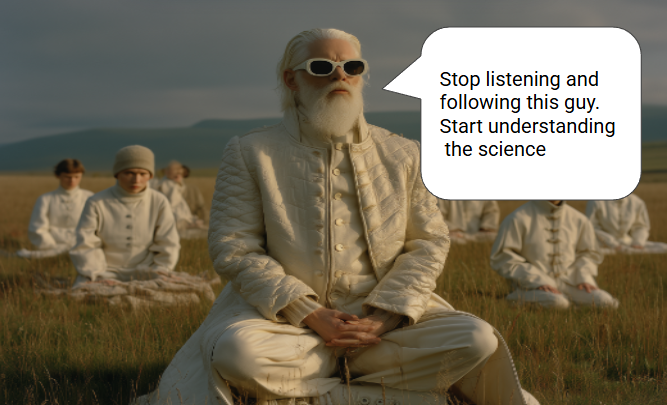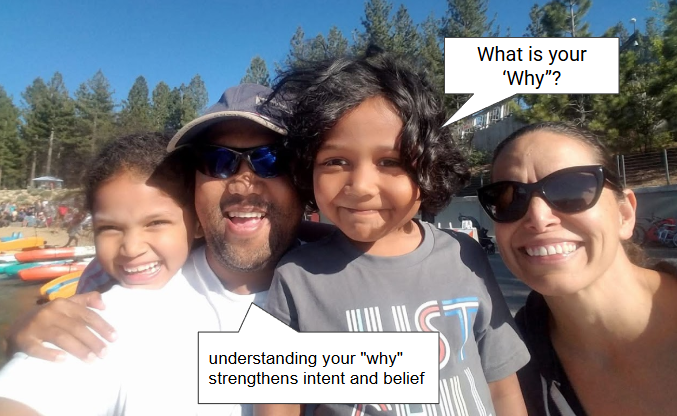
Why Your Affirmations Are Failing You
For years, we’ve been sold a pretty picture: repeat “I am successful,” “I am a money magnet,” or “I am effortlessly thin,” and presto! Your dream life appears as if by magic. Gurus with perfectly curated smiles have promised Ferraris and lakeside homes, all delivered by the cosmic bellboy of the universe. But let’s be brutally honest: for most of us, this picture has been a cruel mirage, leading only to a wasteland of unfulfilled desires and gnawing frustration. It’s time to pull back the curtain on the grand deception of “affirmations as usual” and reveal why your unwavering belief in the “I Am” mantra is precisely why you’re stuck.
The problem isn’t affirmations themselves. The problem is you’ve been doing them wrong—completely wrong. And it’s not entirely your fault. The self-help industry, in its quest for quick fixes and marketable simplicity, has perpetuated a myth that has kept millions locked in a cycle of wishful thinking and unmet expectations. I know, because I’ve been there. My own journey, from escaping poverty to owning multiple Porsches and living in five different countries, has been fueled by affirmations—but not the kind you’ve been taught. This isn’t about magical thinking; it’s about a profound understanding of human psychology, intent, belief, and the non-negotiable component of good old-fashioned work.

The “I Am” Illusion: A Brain’s Betrayal
Let’s dissect the ubiquitous “I Am” prefix. While it sounds powerful, it often becomes a psychological trap, especially when your desired reality is light-years away from your current experience. Imagine standing in your modest apartment, repeating “I am the owner of a private jet.” What’s happening inside your brain? It’s screaming “Liar!”
Your subconscious mind is a highly sophisticated, reality-testing machine. It receives constant input from your senses, feeding it undeniable proof of your current circumstances. When you utter “I am a millionaire” while your bank account hovers near zero, your brain registers a glaring inconsistency, a cognitive dissonance so vast it becomes unresolvable. It’s like trying to convince yourself the sky is green while staring at a brilliant blue expanse. Your brain knows you’re not entirely truthful, and that feeling of pretense, of inauthenticity, sabotages the very process you’re trying to invoke.
The repetition, far from manifesting your desires, merely amplifies the gap between your aspiration and your reality. This leads to that crushing feeling: “Affirmations don’t work for me.” And why would they, when your internal dialogue is a constant battle between hopeful words and undeniable facts? This isn’t about wishing; it’s about priming your brain, and you can’t prime it with a lie.

The Science of Manifestation: More Than Just Words
So, if “I Am” is often a dead end, how do affirmations actually work? At their core, an affirmation is simply a declaration of something you want to happen. But the magic lies not in the mere utterance, but in their function as mental primers.
Everything in our reality, from the smartphone in your hand to monumental human achievements, began as a thought. Affirmations, when used correctly, are powerful thoughts that create a mental pathway for what you want to achieve. This isn’t wishful thinking; it’s about rewiring your brain through neuroplasticity. Your brain is remarkably adaptive, constantly responding to the inputs you feed it. By consistently introducing positive, believable affirmations, you literally strengthen neural pathways, making it easier to learn new things and change ingrained habits. This process builds genuine belief, turning the seemingly impossible into the distinctly possible.
Consider the thought-emotion-behavior-action loop. A positive, believable affirmation generates positive energy. This energy transforms into positive emotions and feelings. These emotions then dictate your behaviors and actions, propelling you towards your goals. It’s a self-reinforcing cycle, but it hinges on that initial spark of genuine belief. Without it, the loop falters, and your aspirations remain just that—aspirations.

The Uncomfortable Truth: You Are Your Own Cosmic Bellboy
Here’s where many self-proclaimed manifestation gurus miss the boat entirely: affirmations only work when you do the work. The widespread fantasy that you simply utter a command and the universe acts as your “cosmic bellboy” is not just misleading; it’s detrimental. It breeds passivity and justifies inaction.
The sooner you grasp that you are your own cosmic bellboy or girl, the sooner you will start manifesting. So, what “work” are we talking about?
- Radical Introspection and Journaling: Before you can affirm, you must know what you truly desire. This requires deep reflection, best achieved through journaling and meditation. Journaling is the cheapest form of therapy, a vital first step in translating vague wishes into concrete thoughts. It’s where you identify your authentic desires, not the ones prescribed by societal pressures or fleeting trends.
- Banish Self-Doubt with Ferocity: Self-doubt is the silent killer of dreams. It stems from external opinions, societal norms, and inherited limitations that whisper, “You can’t.” You must relentlessly banish this insidious voice and cultivate an unshakeable belief that you are enough, worthy of everything you desire. This isn’t arrogance; it’s a fundamental acceptance of your inherent potential.
- Strengthen Knowing Beliefs, Obliterate Limiting Beliefs: Limiting beliefs are the invisible chains that hold you captive. These are the ingrained notions, often inherited from family, culture, or past experiences, like “money is the root of all evil” or “success is only for the privileged few.” These beliefs can sabotage your efforts for years. Conversely, “knowing beliefs” are forged through your own experiences and consciously acquired knowledge. A multi-millionaire knows making a million is possible because they’ve done it. You need to actively dismantle the limiting beliefs and build a robust foundation of knowing beliefs.
- Tangible, Unrelenting Action: This is the non-negotiable. For an affirmation to manifest, there must be corresponding action. Want to write a book? That means writing, editing, formatting, marketing. Want a thriving business? That means strategic planning, execution, and continuous effort. Affirmations are the blueprint; action is the construction. Without the latter, the blueprint remains just a drawing.

The Powerful Trinity: Frameworks for True Manifestation
Moving beyond the flawed “I Am,” there are three potent frameworks for crafting affirmations that actually work:
1. Cognitive Dissonance Affirmations (with a caveat)
Coined by Leon Festinger, cognitive dissonance describes the discomfort of conflicting thoughts. If you say “I am fit and healthy” while living a sedentary lifestyle, your brain registers the inconsistency. This dissonance can create a desire to resolve the conflict, potentially leading to behavioral changes like buying running shoes or eating better. If you act on this desire consistently, the affirmation manifests.
The catch? Most people miss it. The dissonance can be too wide to resolve. Repeating “I am the owner of a Ferrari” while driving a twenty-year-old clunker creates a chasm of disbelief. Your senses provide constant, undeniable evidence of your current reality, and that reality wins out over a fragile affirmation. Cognitive dissonance affirmations are best for shorter-term goals where you already have an underlying belief in their possibility. If it feels too far-fetched, it remains a wish, not a driver for change.
2. Powering Up with Intent-Based Affirmations
This framework shifts from hopeful wishing to purposeful action. Intent is a clear purpose, a resolve to do something. Intent-based affirmations use powerful prefixes that predetermine your commitment: “I will,” “I am going to,” “I am focused on,” and “I am committed to.”
Consider the transformation: instead of the dissonant “I Am Fit and Healthy,” you declare, “I am committed and focused on being healthy.” Notice the shift? You’re no longer pretending; you’re stating a clear commitment to making it a reality.
“I am committed to changing the lives of a million people.”
“I will change the lives of everybody that I interact with.”
“I’m focused on building a multimillion-dollar business.”
These are declarations of purpose, underpinned by a promise you make to yourself. Intentional affirmations propel you forward faster because they acknowledge the reality that the desire isn’t here yet, but you are actively working towards it. This starting point of purpose dramatically increases your belief in achieving and manifesting your affirmation.
3. The Unrivaled Power of Belief-Based Affirmations
This is the preferred, most potent framework. Belief-based affirmations are rooted in a profound, unwavering belief that you are able to manifest your affirmation. When you craft these, you’re doing so from a place of genuine conviction that they are possible for you. It’s about believing you can do it, that you are worthy, that your desired reality is within your grasp.
These affirmations often start with “I Can” or, even more powerfully, “I Could.” The phrase “I could” signals possibility and is inherently underpinned by genuine belief.
“I could be the next millionaire.”
“I could be a best-selling author.”

My own life is a testament to this framework. As a child, living amidst poverty, violence, and abuse, my core belief was, “I could live anywhere else but where I was at the time.” That single “I could” statement ignited a chain reaction. All subsequent affirmations—”I could own a Porsche,” “I could be successful,” “I could live in England,” “I could become a United States citizen,” “I could live in Spain and become an EU citizen,” “I could be a multimillionaire”—were constructed as belief-affirmations. And all have manifested over the past 20 years.
When you start with belief, something fundamental shifts within you. Belief stems from ultimate desire, and when you desire something profoundly, you are always willing to put in the work to make it happen. Positive affirmations generate positive energy, which transforms into emotions and feelings, dictating your behaviors and actions. This is the mind-body connection at its most potent.

The Secret Sauce: Unleashing Your Powerful “Why”
Regardless of the framework you choose, there’s a secret sauce that supercharges every affirmation: your “why.” It’s not enough to simply state what you want; you must understand, with profound clarity, why it’s important to you.
If your affirmation is “I am committed to staying healthy,” ask yourself: “Why is this important to me? Why do I want to manifest this into my reality?” For me, my “why” for health is to spend as much quality time with my family as possible, enjoying life to the fullest. That deep-seated motivation fuels every healthy choice.
When you uncover your profound “why,” your affirmations cease to be mere words. They transform into powerful, belief- or intent-driven statements that actively drive your behaviors and actions. You suddenly have a compelling reason for every effort, every sacrifice. I urge you to write down at least 2-3 specific, compelling reasons for each of your affirmations.
Crafting Your Reality: A Call to Action
The journey from a vague wish to a tangible reality begins with crafting truly effective affirmations.
- Identify Your Desire: Be unequivocally clear about what you want. No ambiguity.
- Determine Your Belief Level: How strongly do you currently believe this is possible for you? Be honest.
- Choose Your Framework: Based on your belief level, choose Cognitive (for shorter, believable goals), Intent (for commitment and action), or Belief-Based (for profound potential).
- Incorporate Your “Why”: Ask “Why is this important?” and list 2-3 compelling reasons. This grounds your affirmation in purpose.
- Use Positive, Relevant Language: Focus on what you want to achieve. For “I Am” and “I Could” statements, frame them as present or immediately possible.
- Make it Personal and Memorable: Use your own words. Keep it concise, simple, and direct.
- Visualize: As you write, deeply immerse yourself in the feeling of already experiencing the outcome. See it, feel it, taste it, hear it, smell it. Engage all your senses.
The power of affirmations lies not in their magic, but in their ability to prime your brain, align your actions, and provide the consistent motivation fueled by your profound “why.” This is not about passive wishing; it’s about active creation.

The Daily Revolution: Integrating Affirmations into Your Life
Writing them down is just the beginning. The true revolution occurs through consistent integration and daily practice.
- Daily Repetition and Immersion: To truly embed the power of positive thinking, make daily repetition a non-negotiable. Read your core affirmations every morning and evening. Infuse your day with them, repeating them for at least five minutes, two to three times a day. This opens your subconscious mind to new information.
- Journaling as a Manifestation Tool: Your journal is your confessional, your strategic planner, your therapist. Use it to reflect on desires, banish self-doubt, and constantly re-evaluate your “knowing beliefs” versus “limiting beliefs.” It keeps your desires clear and your commitment to the necessary “work” unwavering.
- Cultivate Belief and Emotion: Affirmations are not just words; they are ideas imbued with feeling. You must believe in them. If an affirmation doesn’t resonate, or if it feels like a lie, adjust it. Start with something you can believe, and gradually expand. Energize your affirmations with passion, excitement, and strong emotions. Visualize your desires vividly, engaging all your senses. This isn’t fluff; it’s critical for prompting action.
- Positive Mindset and Consistent Action: A positive mindset isn’t naive optimism; it’s a strategic advantage. It opens you to opportunities and allows your subconscious to find creative solutions. As you consistently build confidence through genuine belief and purposeful action, you will direct your thoughts more effectively towards your goals. You will start to believe, with certainty, that your goals are indeed happening, and you will take the necessary action to achieve them.
Beyond the Myth: Your Empowered Reality
The “I Am” gurus sold you a fantasy, but the truth is far more empowering. You are not a passive recipient of cosmic gifts; you are the director of your own thoughts and your own life.
By discarding the simplistic “I Am” dogma and embracing the power of intent, belief, your profound “why,” and relentless action, you transition from passive wishing to active creation. You understand that affirmations are a cycle: thought transforms into feeling, which dictates behavior, leading to actions, and finally, to tangible outcomes. You quite literally can think your new reality into existence, but only when those thoughts are authentic, purposeful, and backed by the unwavering commitment to do the work.
There is enough abundance for everyone, and the knowledge of how to access it should be freely accessible. Stop waiting for the universe to deliver. Start using these powerful techniques today. Rethink how you sculpt your affirmations, where you focus your thought energy, and how diligently you commit to the work. The love, appreciation, success, and abundance you’ve always desired are not a magical outcome; they are the inevitable result of your empowered creation.
Are you ready to stop wishing and start creating? Join our free course on how to create affirmations that work.
Tag:affirmations



